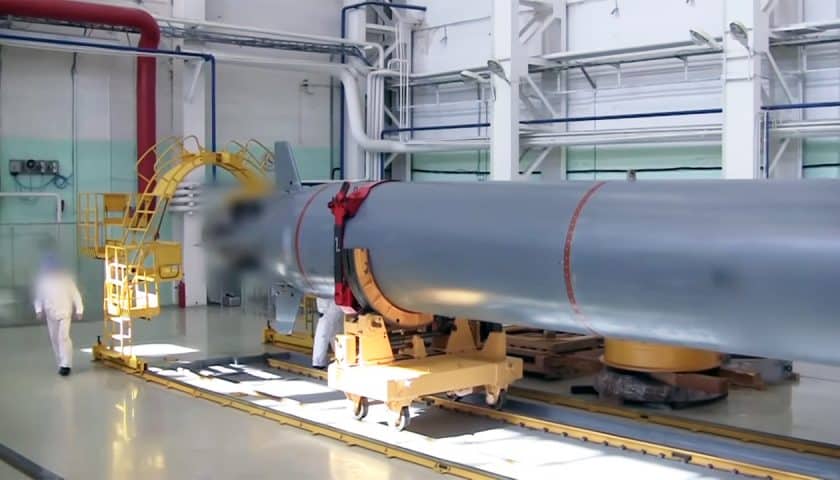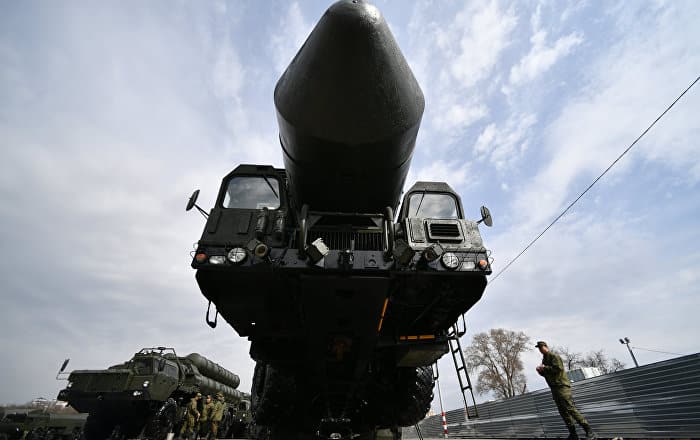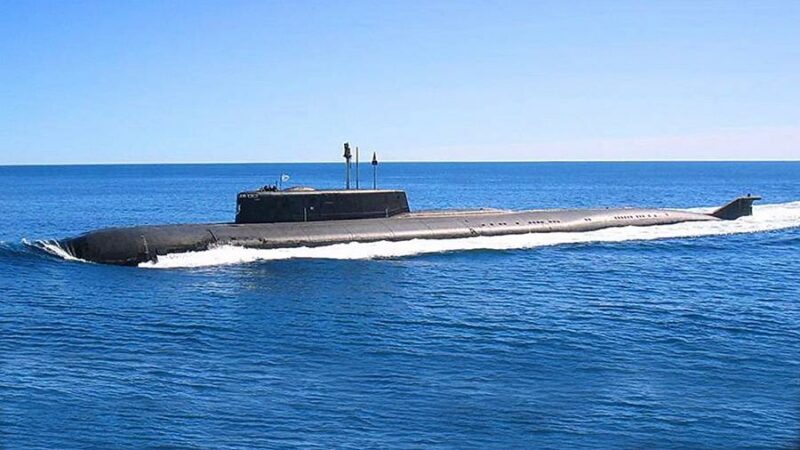On the occasion of the campaign for the Russian presidential election of 2018, outgoing President Vladimir Putin caused a certain stupor in the West. by publicly presenting several “revolutionary” military programs, supposed to give a decisive advantage to the Russian armies for the decade to come.
Among these programs, the RS-28 SARMAT ICBM missiles and the Avangard hypersonic glider are due to enter service this year, while the Kinzhal airborne hypersonic missile has already equipped some Mig-31Ks modified since 2019. The nuclear-powered cruise missile Burevestnik has more or less fallen into oblivion.
As for the dronized 2M39 Kanyon nuclear-powered heavy torpedo, also designated Poseidon or Status-6, it should soon join active service, while the Belgorod submarine, which is to operate it, has been delivered to the Russian Navy. in the spring of 2022.
24 meters long and 2 meters in diameter, the Kanyon torpedo is in fact an autonomous drone powered by a miniaturized nuclear reactor, allowing it to reach very high speeds of around 100 knots, and equipped with an autonomy greater than 6000 km, enough to cross the Atlantic from side to side, at depths of up to 1000 meters.
In addition, the Kanyon carries a nuclear payload of 100 kilotons equivalent to that implemented by the individual atmospheric re-entry systems MIRV, with a capacity of strategic destruction.
The scenario of use of this weapon is based on a pre-deployment by the modified nuclear missile submarine Belgorod or by the Khabarovsk modified for this purpose, allowing the torpedo to strike port or littoral installations of the adversary, like the Norfolk military port.
Due to its structure, such an explosion would cause very significant damage to the docked fleet, the destruction of coastal military and civilian infrastructure, and the contamination of a vast coastal area, requiring the definitive evacuation of this space.

To transport the Kanyon, the Russian Navy specially modified the Belgorod cruise missile submarine. The construction of the ship was started in 1992, before being abandoned a few years later for lack of funds.
In 2012, the Russian Naval Staff restarted the construction of the submarine, on modified plans with respect to the ships of the 949AM Antey project (Oscar 2 in the NATO designation), to increase its length from 154 to 184 meters, and its submerged displacement of 20.000 tons to 30.000 tons, making it the largest submarine in service in the world after the last one was placed in reserve. Typhoon Russian.
Thus, the new ship will be able to implement up to 6 Kanyon torpedoes, while benefiting from the reinforced discretion of the Antey, much higher than that of older Russian submarines.
In fact, according to Russian communication, often repeated in the West, the arrival of the Belgorod/Kanyon couple should profoundly upset the strategic balance in the Atlantic, posing a direct threat to American ports, especially since with its speed, its depth and range, the Kanyon would be impossible to intercept.
Here we have all the characteristics of what the Germans liked to designate under the term Wunderwaffen, or miracle weapon. However, the reality is quite different...
Indeed, the use of the Kanyon, or its simple deployment near the American coasts on board the Belgorod, would constitute an unacceptable casus belli for the United States, equivalent to the deployment of SS-4 missiles on the island of Cuba in 1962, especially since the submarine will be the subject of all the attention of the US Navy and allied fleets, and the Kanyon, by design, is very probably not acoustically discreet .
In other words, it is very unlikely that the Belgorod/Kanyon couple will be able to cross the perimeter of acoustic protection which surrounds the eastern coast of the United States and Canada. There remains the possibility of launching torpedoes at a great distance, to take advantage of its autonomy, betting on its speed for its protection.
Admittedly, no Western torpedo exceeds 60 knots today, making interception of the Kanyon difficult. Difficult, but not impossible.
As a reminder, at the end of the 80s, the Soviet Navy already had nuclear submarines, the Alphas, capable of top speeds greater than those of Western torpedoes. The solution was, then, to attack the target from the front, and not from the rear, which also allowed the torpedo to detonate near the torpedo tubes of the submarine.
Even without impact, the shock wave could then trigger the explosion of the torpedoes in their tubes, and therefore the loss of the submarine which, evolving at 35 knots like the Alphas, would then be blind and deaf, and therefore unable to avoid the threat.


The rest of this article is for subscribers only
The Classic subscriptions provide access to
all articles without advertising, starting at € 1,99.
Newsletter subscription
Register for the Meta-Defense Newsletter to receive the
latest fashion articles daily or weekly


[…] […]
[…] […]